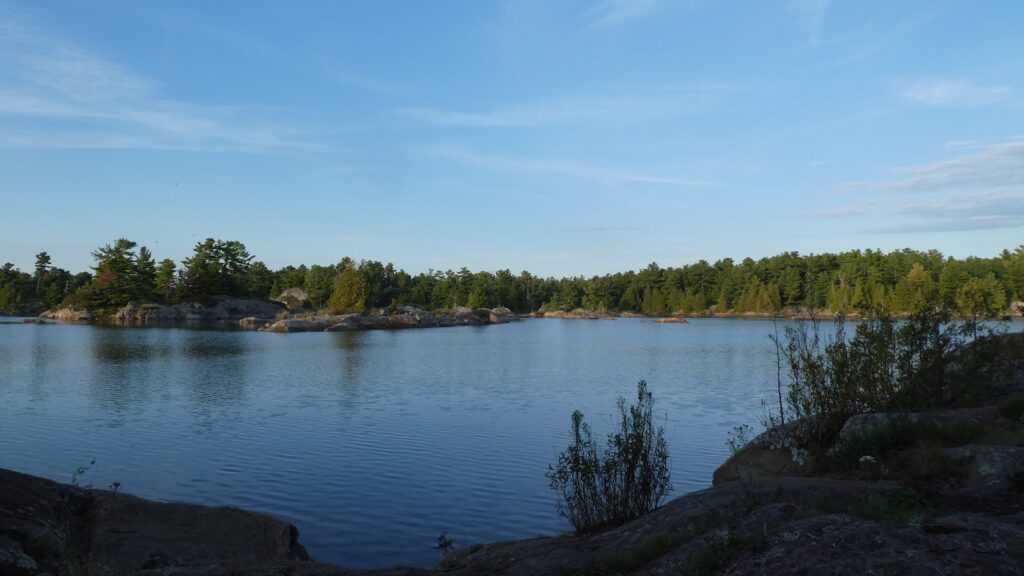
Ontario, Canada, is a treasure trove of natural beauty, ecological diversity, and breathtaking landscapes. From rugged coastlines to serene island clusters and historic shipwrecks to vibrant urban-natural blends, Ontario’s national parks and conservation areas offer a myriad of experiences for nature lovers, adventure seekers, and conservation enthusiasts alike. Let’s embark on a journey through some of these magnificent places, each promising an unforgettable adventure and a deeper appreciation for the natural world. Listen to the episode on Spotify or wherever you get your podcasts.
Bruce Peninsula National Park: A Rugged Natural Paradise
Nestled on the Niagara Escarpment, Bruce Peninsula National Park is a sanctuary of rugged coastline and crystal-clear waters. This park is a haven for hikers, boasting trails that traverse diverse terrains, offering stunning views of Georgian Bay’s turquoise waters against dramatic cliff faces. For those who seek tranquillity beneath the surface, the adjacent Fathom Five National Marine Park presents an underwater wonderland of shipwrecks and geological formations, making it a premier destination for scuba divers.
Point Pelee National Park: A Birder’s Heaven
Point Pelee National Park, the southernmost point of mainland Canada, is a mosaic of marshes, lush forests, and sandy beaches. It’s renowned for its role as a stopover for migrating birds, making it a birdwatcher’s paradise, especially during spring and fall migrations. The park’s unique ecosystems support a variety of wildlife, offering nature enthusiasts an intimate glimpse into the vibrant life of Ontario’s natural inhabitants.
Georgian Bay Islands & Thousand Islands National Parks: Aquatic Adventures Await
Ontario’s water-based national parks, Georgian Bay Islands and Thousand Islands provide a unique blend of recreational activities set against stunning backdrops. These parks protect numerous islands, each with its own character, ranging from rugged, pine-covered outcrops to soft, sandy shores. Kayaking, boating, and fishing are just a few ways visitors can immerse themselves in these aquatic paradises, connecting with the serene beauty of Ontario’s freshwater ecosystems.
Rouge National Urban Park: Where Urban Meets Nature
Rouge National Urban Park represents a groundbreaking approach to conservation, blending urban landscapes with natural preservation. Located in the Greater Toronto Area, this park offers city dwellers and visitors alike an accessible escape into nature. With its diverse habitats, Rouge Park is a testament to the importance of integrating natural spaces within urban environments, promoting biodiversity and offering a green sanctuary for all.
Lake Superior’s Marine Conservation Area: Protecting Freshwater Wonders
The marine conservation area on Lake Superior underscores Ontario’s commitment to protecting and understanding its freshwater ecosystems. This initiative is vital for preserving the lake’s biological diversity and ensuring the sustainable use of its resources. By safeguarding this vast body of water, Ontario sets a precedent for freshwater conservation globally, highlighting the importance of stewardship and responsible enjoyment of natural resources.
Embark on a Journey of Discovery and Conservation
Ontario’s national parks and conservation areas are more than just destinations; they are invitations to explore, understand, and protect the natural wonders that define Canada’s landscape. Whether you’re drawn to the underwater mysteries of Fathom Five, the migratory marvels of Point Pelee, the island adventures of Georgian Bay and Thousand Islands, the urban-natural blend of Rouge Park, or the freshwater initiatives on Lake Superior, Ontario offers a myriad of opportunities to connect with nature and support conservation efforts.
As we journey through these spectacular spaces, let’s remember the role each of us plays in preserving their beauty for future generations. Ontario’s natural wonders are a shared heritage, offering endless inspiration and a resounding call to explore, enjoy, and protect our planet’s precious ecosystems.
You can listen to the podcast episode on which this blog post is based on Spotify or wherever you get your podcasts.
